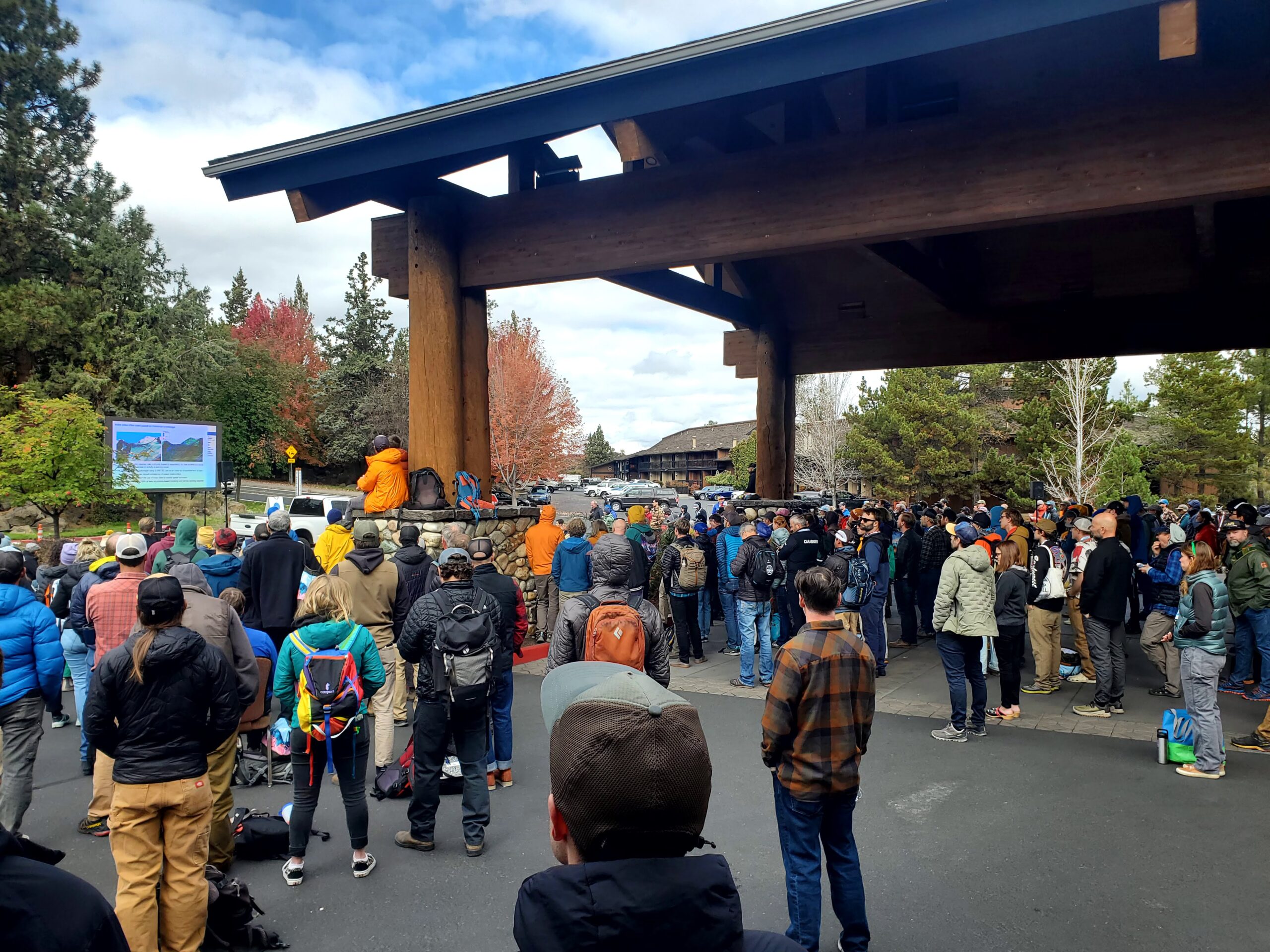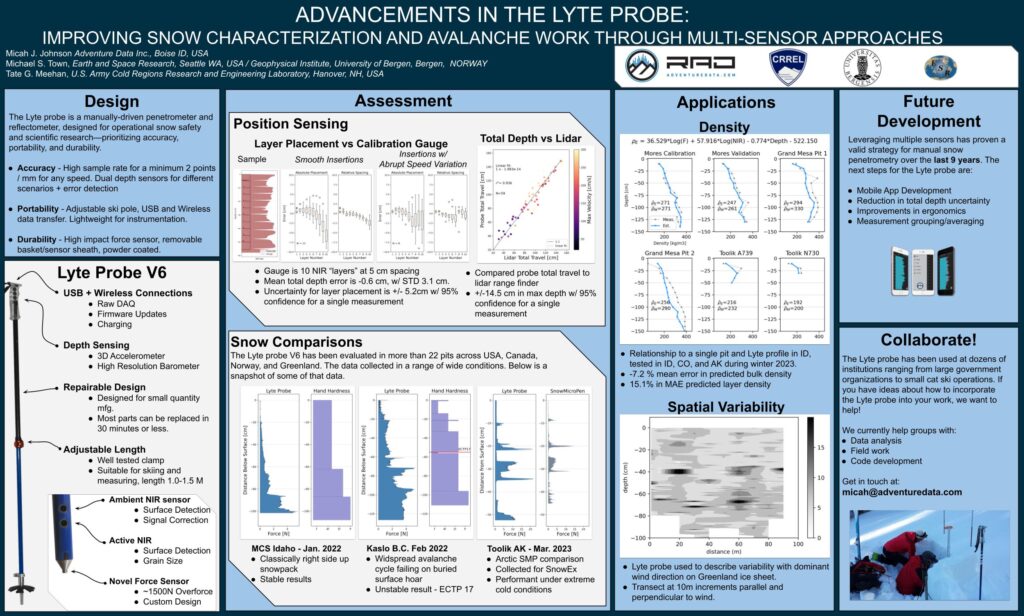
We’ve recently come back from the International Snow Science Workshop (ISSW), held in Bend, Oregon, and it proved to be an amazing five-day experience. Our days were brimming with engaging meetings with our peers in the field of snow science, as well as reconnecting with old friends and sharing innovative ideas. However, there was an unexpected twist during Thursday’s poster session when the entire town suffered a power outage, all thanks to a mischievous squirrel. This unfortunate event temporarily disrupted the session, but thanks to some quick thinking by the organizers, we managed to improvise an outdoor poster session and later resumed inside in the evening.
For this ISSW, we believed it was the right time to offer a transparent view of the Lyte probe’s performance. Our initial presentation of the Lyte probe was at ISSW 2016 in Breckenridge, Colorado, where we introduced a NIR-only probe and demonstrated its capabilities. Since then, significant progress has been made. We conducted a Beta test, integrated the probe into a ski pole, designed a custom penetrometer, and implemented numerous enhancements to the depth algorithm.
You might be wondering how we carried out this evaluation. We examined several key aspects, which we’ll summarize below:
- Recognizing historical limitations of various devices presented at past ISSW events.
- Outlining the design goals of the Lyte probe that address these historical limitations.
- Evaluating the accuracy of individual layer placement and the total depth estimation.
- Identifying areas for further improvement.
- Exploring promising new applications, such as estimating snow density.
One of the fantastic outcomes of our collaboration with our coauthors has been not just the identification of areas for improvement but also the development of concrete approaches to address these challenges. In fact, the work conducted during the summer of 2023 alone has already yielded substantial enhancements to the probe, which, regrettably, are not included in our current paper. If you’re keen on exploring these latest advancements, we encourage you to delve into our paper titled “Advancements in the Lyte probe: Improving Snow Characterization and Advancing Avalanche Work through Multi-Sensor Approaches.” You can access the full paper in the Montana State University Archive for a more comprehensive understanding of our research.
Below is a picture of our poster!

